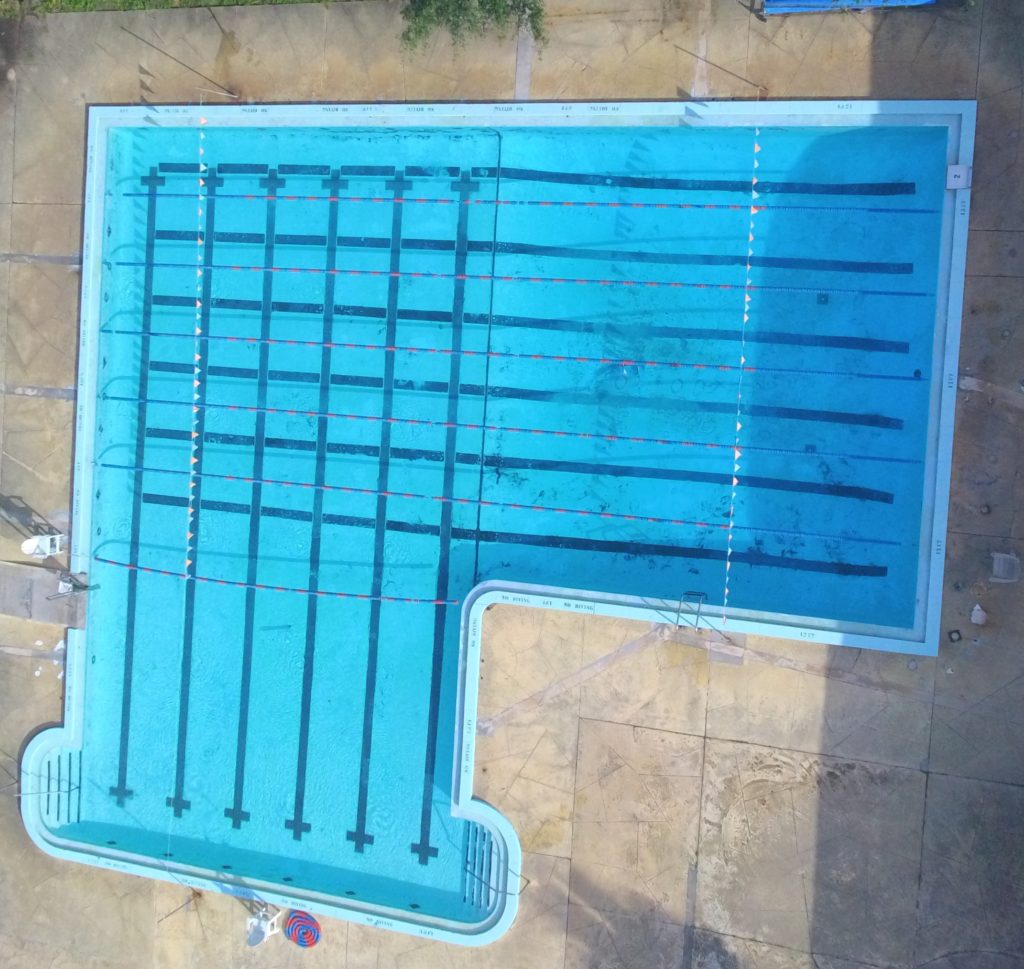a less than lethal dose at an extended contact time⏱
To determine whether a less than lethal dose of copper sulfate, over an extended contact time (CT) in a real world (non-laboratory) swimming pool application, will stagnate growth, have no effect on, or prove fatal to cyanobacteria.
Earlier this year we had collected samples of “Black Algae” from a swimming pool and had, with assistance from the University of Florida’s phycology department, identified “Black Algae” as not an algae at all. Dr. Phlips (professor of algal physiology and ecology) was able to confirm my supposition. The dime-sized samples of black algae, collected from a public swimming pool in Northcentral Florida, was identified as not one, but several genus of cyanobacteria (blue/green algae). Oscillatoria, Microcoleous, and Nostoc were the most prevalent. You can review our research in the article titled “the Black Algae myth”.
We had also discussed in that article, based upon studies conducted in water treatment, that heavy metals (copper/silver) would yield the most desirable results. Understanding that cyanobacteria are indeed bacteria and not algae, we do know that this prokaryote does have some “protist-like” qualities in that it utilizes chlorophyll and performs photosynthesis.
Copper is essential to photosynthetic organisms, however in large amounts it can prove fatal to the bacteria. The metal is necessary to perform photosynthesis, but in excess amounts will inhibit the process. Without the ability to synthesize food from CO2 (carbon dioxide) and energy from the sun, the bacteria, like any photosynthetic organism, will not survive. Copper will also lyse (rupture the cell membrane) the bacteria. Therefore, the impact of a copper algaecide in the treatment of cyanobacteria is two-fold, damaging the bacteria from both inside and out.
We are also aware from studies conducted by D. Kumar, M. Jha, and H.D. Kumar (COPPER TOXICITY IN CYANOBACTERIUM THE FRESH WATER NOSTOC) that “Some heavy metals … are toxic when present in higher concentrations…. The toxicity of different metals varies with different microorganisms and largely depends upon algal population density: The denser the population the more numerous the cellular sites available, leading to decreased toxicity. In the present study, copper was lethal to Nostoc linckia (Nostoc sp.,Microcoleus, and Oscillatoria were identified in the samples AFT&C had taken from swimming pools) at 5.0 ppm.” Unfortunately, obtaining a copper level of 5 ppm is not realistic in a swimming pool as we utilize EPA safe drinking water guidelines, allowing a maximum copper level of only 1 ppm.
“It takes more time to kill a Dragon ? than a Lizard ? with the same sword ?” – Rudy Stankowitz
A level within the EPA guidelines should lead to stagnation in growth. We hope to prove that with an increased contact time, a non-lethal dose of copper sulfate will prove fatal to cyanobacteria. With nearly all-available research on copper in the treatment of cyanobacteria being the result of studies conducted in laboratory experiments, we set out to acquire our findings from a real-world application. Swimming pools are not maintained in a lab, they are maintained in the field. So, in keeping with our “Funk the Laboratory” M.O. we would need to locate a test pool with natural cyanobacteria growth in which to conduct our studies.
Luckily, it did not take long before a facility had offered to allow us use of their swimming pool for our testing. However, what we had procured may prove to be more of a challenge than anticipated. Two hundred thirty thousand gallons (230,000 gal) of water and greater than fourteen years (> 14 years) of cyanobacteria growth.
For details on the Copper experiment and our results (to see what happens next) click the “Read More” below:
READ MORE
Special thanks to Eli Ben-Shoshan (eli@benshoshan.com) for meeting me early on a Sunday morning for the killer drone footage.

